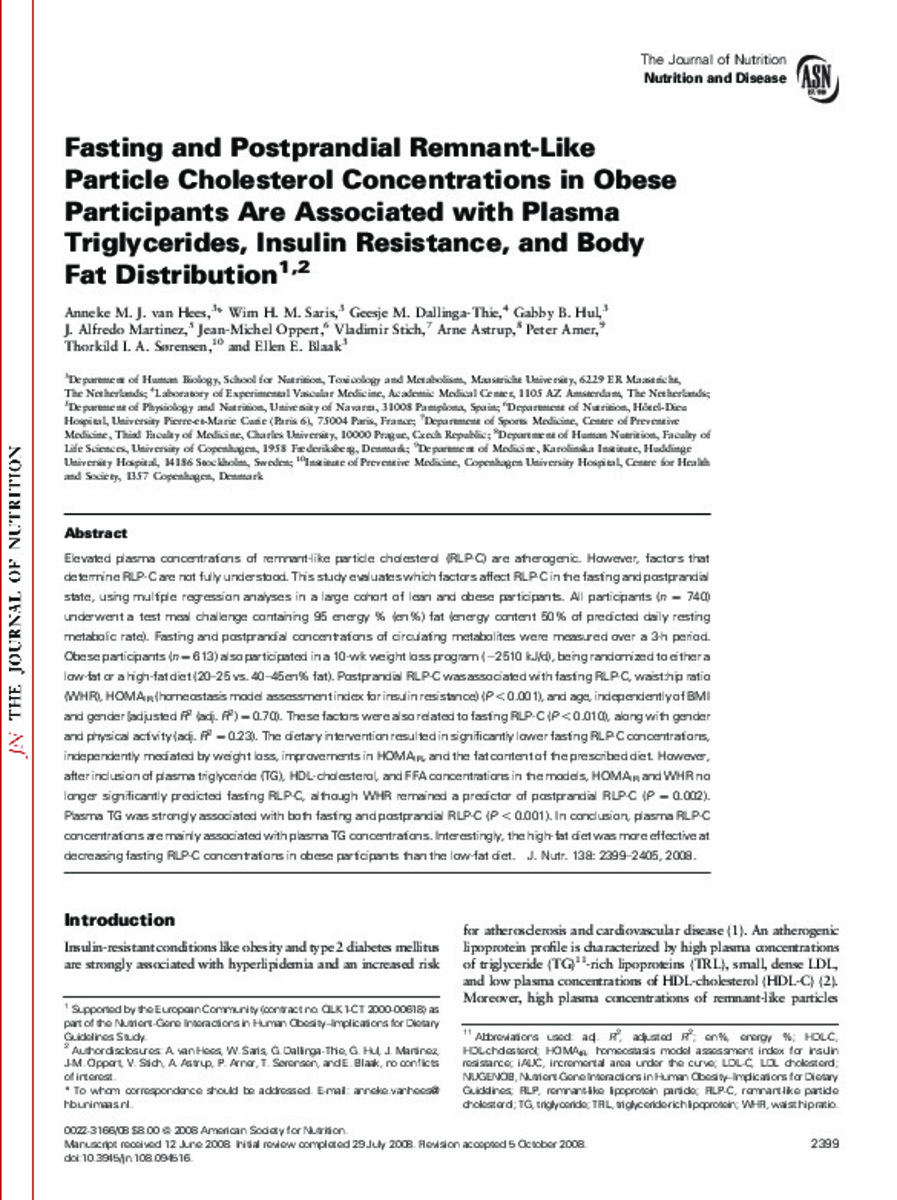Fasting and postprandial remnant-like particle cholesterol concentrations in obese participants are associated with plasma triglycerides, insulin resistance, and body fat distribution
Keywords:
Cholesterol blood
Lipoproteins blood
Obesity blood
Triglycerides blood
Publisher:
American Society for Nutrition
Citation:
van Hees AM, Saris WH, Dallinga-Thie GM, Hul GB, Martinez JA, Oppert JM, et al. Fasting and postprandial remnant-like particle cholesterol concentrations in obese participants are associated with plasma triglycerides, insulin resistance, and body fat distribution. J Nutr 2008 Dec;138(12):2399-2405
Statistics and impact
0 citas en

Items in Dadun are protected by copyright, with all rights reserved, unless otherwise indicated.








